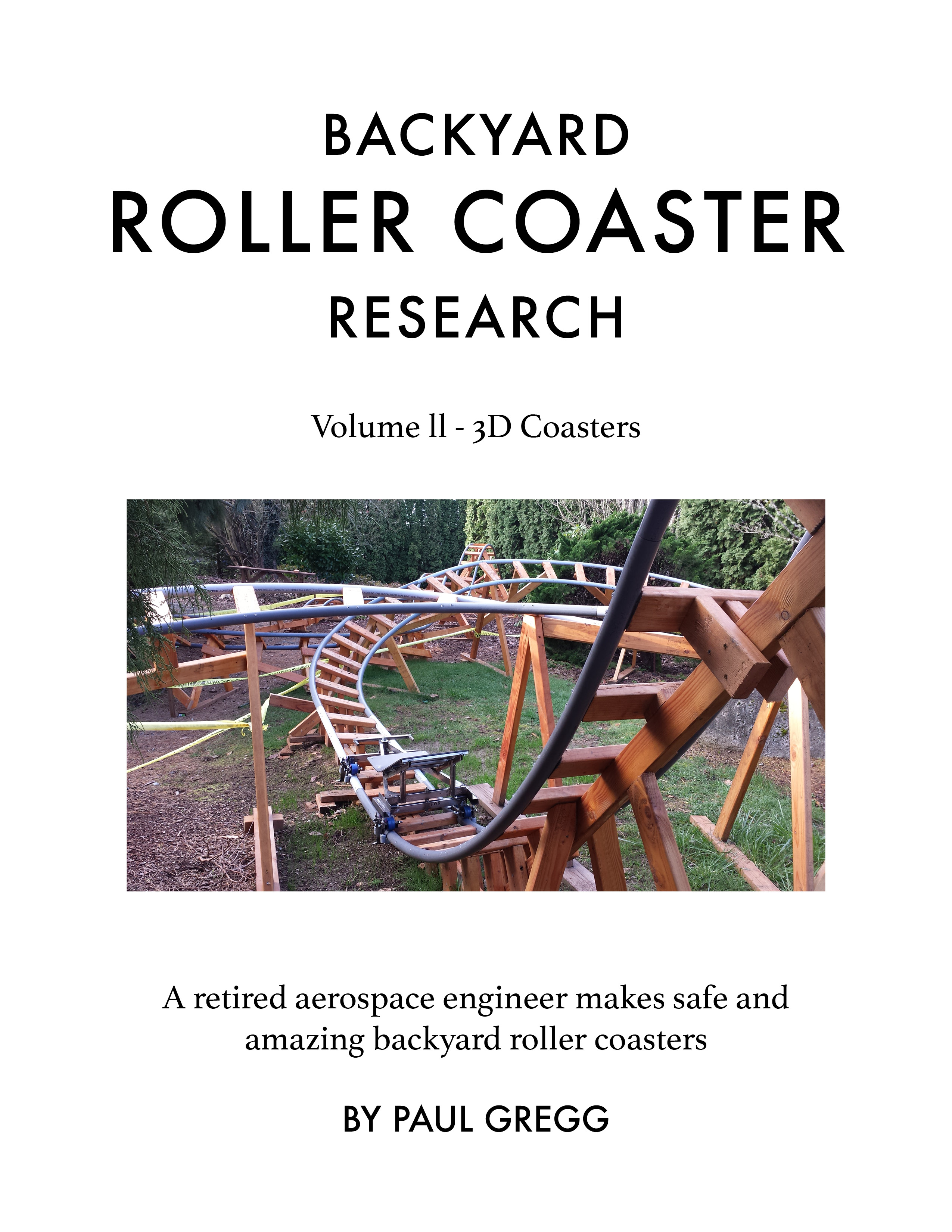Backyard Roller Coasters Research Volume II - 3D Coasters (E-book)
Written by Paul Gregg. Edited by Kyle Gregg
Upon purchase you will be immediately provided with a link to download the book in pdf form. Your personalized PDF will be watermarked to ensure copyright protection.
Volume II builds on the information presented in in Volume I and is incomplete without it. The two BYRCs presented in this volume are “3D” in that they make banked turns and change elevation simultaneously, have circuit tracks (meaning the end connects to the beginning of the lift hill) and the cart only travels one way round the track.
DetailsDownload Free Sample
 Price: $18.99
Price: $18.99

Backyard Roller Coasters Research and Development (E-book)
Written by Paul Gregg. Edited by Kyle Gregg
Upon purchase you will be immediately provided with a link to download the book in pdf form. Your personalized PDF will be watermarked to ensure copyright protection.
Volume I presents elementary physics, essential track fabrication methods, such as track tie fabrication, PVC rail hot sand forming, and cart fabrication. It also contains general and specific design information about my first backyard roller coaster, the “Negative G”, which is an out-n-back coaster, with no turns or banks, and a simpler fixed-wheel four wheel cart.
DetailsDownload Free Sample
 Price: $14.99
Price: $14.99

3D Gallery
Want to see how they are made?
Coaster Gallery
See our gallery of coasters
Youtube
Visit our youtube channel for a bunch of great videos!
WHY I DO WHAT I DO
"I know what you're all thinking, and I've come to the same conclusion: Two roller coasters are just not enough..." - Paul Gregg, January 2015
Around 20 backyard roller coasters can be found online, built over the past 15 years. Most are built by energetic teenagers, but they look pretty poorly made, and of questionable safety. There are a few built by some very clever adults, but only a couple have what I would call a reasonable amount of physics and engineering applied to them. None had any sort of documented qualification testing we would require of aerospace structures, and would have a reasonable assessment of safety. So in July of 2014 I set out to design and build a simple out- and-back roller coaster, in part to keep my engineering skills sharp, and in part to thrill some of my older grandchildren (5 and 7 years of age at the time).